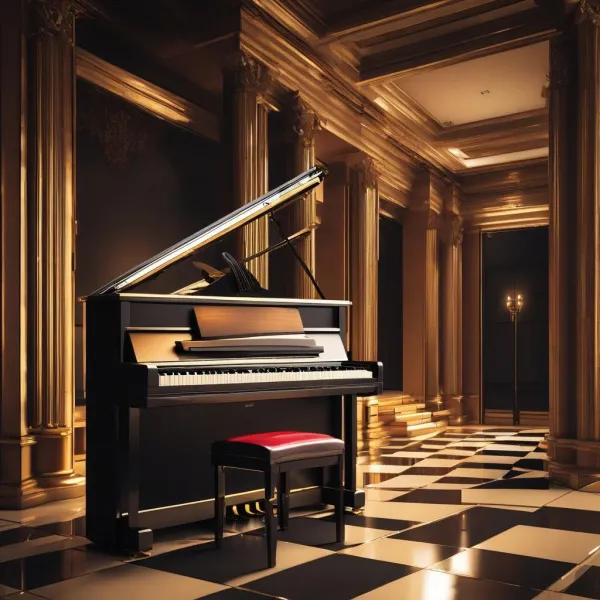In the intricate tapestry of classical music, the threads that connect the past and present are not just woven by the notes on a score but by the lineage of mentorship that threads through generations. My journey in music, under the mentorship of Meng-Chieh Liu and Samuel Hsu, has revealed a lineage that ties me to some of the most monumental figures in music history: Johann Sebastian Bach, Frédéric Chopin, and Franz Joseph Haydn. This narrative isn't just a tale of musical instruction - it's a story of direct lineage to the titans of classical music.
The Liu Lineage: From Bach to me
Starting with Meng-Chieh Liu, my educational journey traces back to the venerable Jorge Bolet, a Cuban-American concert pianist whose mastery at the keyboard was matched by his scholarly pursuit of music's greatest works. Bolet, in turn, was a protégé of Moriz Rosenthal, a Polish maestro whose own lineage connects directly to Franz Liszt, the Hungarian composer known as much for his virtuosity at the piano as for his innovations in composition. Liszt’s education came under the guidance of Carl Czerny, a bridge between the classical and romantic eras, whose own musical journey was shaped by none other than Ludwig van Beethoven. Beethoven, a towering figure in music, was himself a student of Christian Gottlob Neefe, who, in turn, studied with Gottfried August Homilius, a direct pupil of Johann Sebastian Bach, or as I like to think of him, "The Man."
- Meng-Chieh Liu: (my piano mentor) - who studied with:
- Jorge Bolet (November 15, 1914 – October 16, 1990) - a Cuban-born American concert pianist who, in turn, studied with:
- Moriz Rosenthal (17 December 1862 – 3 September 1946) - a Polish pianist and composer who, in turn, studied with:
- Franz Liszt (22 October 1811 – 31 July 1886) - a Hungarian composer, virtuoso pianist, conductor, and teacher who, in turn, studied with:
- Carl Czerny (21 February 1791 – 15 July 1857) - an Austrian composer, teacher, and pianist of Czech origin who, in turn, studied with:
- Ludwig van Beethoven (17 December 1770 – 26 March 1827) - a German composer and pianist who, in turn, studied with:
- Christian Gottlob Neefe (5 February 1748 – 28 January 1798) a German opera composer and conductor who, in turn, studied with:
- Gottfried August Homilius (2 February 1714 – 2 June 1785) a German composer, cantor and organist who, in turn, studied with:
- Johann "The Man" Sebastian Bach (31 March 1685 – 28 July 1750)
But the plot thickens - if we pivot back to Rosenthal, we find a direct path to Chopin through Karol Mikuli, a Polish composer and a direct student of Chopin himself. This connection enriches the lineage with the poetic lyricism and revolutionary spirit of Chopin's music.
- Moriz Rosenthal (17 December 1862 – 3 September 1946) - a Polish pianist and composer who sudied with both:
- Karol Mikuli (22 October 1821 – 21 May 1897) - a Polish pianist, composer, conductor and teacher who, in turn, studied with:
- Frédéric Chopin (1 March 1810 – 17 October 1849).
The Beethoven-Haydn Connection
Diving deeper into the lineage from Beethoven, we encounter Antonio Salieri, an Italian composer whose teachings influenced Beethoven. Salieri himself was a student of Franz Joseph Haydn, a name synonymous with the development of the symphony and the string quartet. This connection to Haydn adds another layer of classical foundation to my musical heritage, blending the structural genius of Haydn with the expressive depth of Beethoven.
- Ludwig van Beethoven (17 December 1770 – 26 March 1827) - a German composer and pianist who studied with:
- Antonio Salieri (18 August 1750 – 7 May 1825) - an Italian composer and teacher who, in turn, studied with:
- Franz Joseph Haydn (31 March 1732 – 31 May 1809).
The Hsu Lineage: A Parallel Path to Bach
The narrative through Samuel Hsu offers a parallel yet equally fascinating lineage that also leads back to Bach. Hsu's lineage includes Rosina Lhévinne and Vasily Safonov, culminating in Theodor Leschetizky. Leschetizky, like Liu's lineage, connects to Carl Czerny, thus converging once again with Beethoven, Neefe, Homilius, and ultimately Bach. This shared lineage through Czerny emphasizes the universality of Bach's influence across multiple branches of musical mentorship.
- Samuel Hsu (my piano mentor)- who studied with:
- Rosina Lhévinne (March 29, 1880 – November 9, 1976) - a Russian and American pianist and famed pedagogue who, in turn, studied with:
- Vasily Safonov (25 January 1852 – 27 February 1918) a Russian pianist, teacher, conductor and composer who, in turn, studied with:
- Theodor Leschetizky (22 June 1830 – 14 November 1915) - an Austrian-Polish pianist, professor, and composer who, in turn, studied with:
- Carl Czerny (21 February 1791 – 15 July 1857) - an Austrian composer, teacher, and pianist of Czech origin who, in turn, studied with:
- Ludwig van Beethoven (17 December 1770 – 26 March 1827) - a German composer and pianist who, in turn, studied with:
- Christian Gottlob Neefe (5 February 1748 – 28 January 1798) a German opera composer and conductor who, in turn, studied with:
- Gottfried August Homilius (2 February 1714 – 2 June 1785) a German composer, cantor and organist who, in turn, studied with:
- Johann "The Man" Sebastian Bach (31 March 1685 – 28 July 1750)
A Symphony of Lineages
What emerges from this exploration is not just a list of names but a symphony of connections, a melody that spans centuries, embodying the essence of classical music's evolution from Bach's baroque complexities to Chopin's romantic expressions and Haydn's classical forms. My place in this lineage is not merely as a recipient of this rich heritage but as a custodian, charged with the responsibility to carry forward the legacy of these musical giants.
As I reflect on my connection to these monumental figures, I am reminded that music is a living, breathing entity, continuously evolving yet forever tied to its roots. My journey is a testament to the enduring power of classical music, a narrative that underscores the importance of mentorship, tradition, and the eternal bond that music forms across generations.
In this story of lineage and legacy, I find not just the notes of my musical identity but the chords of a shared history, a harmonious legacy that I am honored to continue. This narrative, woven from the past to the present, highlights the timeless nature of music, connecting us to the masters of yesteryear and inspiring the melodies of tomorrow.
For anyone interested, I put together a chart showing my musical lineage here.








